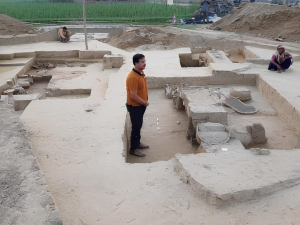Eternal Echoes: Navigating the realm of death and immortality in Ancient Egypt
Ancient Egypt's mythology emphasized the cosmic order and the dualistic afterlife, with earthly and divine realms intersecting. Egyptian funeral rites and burial practices, including the Book of the Dead, mummification, and grandiose tombs, facilitated the soul's journey through the afterlife. Osiris, the god of the afterlife, was central to the Egyptian pantheon's cycle of death and rebirth. The deceased sought immortality through Osiris's journey, and Pharaohs constructed pyramids as cosmic gateways, ensuring their ascension to heaven and eternal existence among the gods. Ancient Egyptians contemplated life, death, and immortality, leaving a lasting mark on time as they sought eternal echoes, transcending mortal and divine boundaries.







